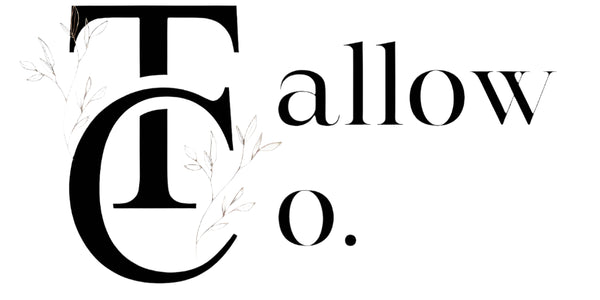
Sunscreen Sales and Seed Oils: A Historical Link
Share
The relationship between sunscreen sales and the introduction of seed oils into the modern diet might not seem immediately obvious, but a closer look at historical trends, societal shifts, and scientific developments reveals an intriguing correlation. While causation is harder to pin down, the timelines of these two phenomena—sunscreen’s rise in popularity and the widespread adoption of seed oils—intersect in fascinating ways. Let’s explore how these two seemingly unrelated products might be linked through changes in health, culture, and industry over the decades.
The Rise of Seed Oils in the Diet
Seed oils—such as soybean, canola, sunflower, and corn oil—began their ascent in the early 20th century, largely driven by industrial innovation and economic incentives. Before this period, traditional fats like butter, lard, and olive oil dominated culinary practices. However, the advent of industrial processing techniques, such as hydrogenation and refining, made seed oils cheap, shelf-stable, and appealing to food manufacturers. By the mid-20th century, particularly after World War II, seed oils became a staple in processed foods, margarine, and cooking oils, marketed as “heart-healthy” alternatives to saturated fats.
Data from the U.S. Department of Agriculture shows that per capita consumption of soybean oil alone skyrocketed from negligible amounts in the early 1900s to over 30 pounds per year by the 2000s. This dietary shift coincided with broader changes in lifestyle and health, including rising rates of chronic diseases and, notably, an increased focus on skin cancer prevention.
Sunscreen Sales Take Off
Sunscreen, meanwhile, emerged as a commercial product in the mid-20th century. While rudimentary sun protection existed earlier (think zinc oxide pastes used by athletes in the 1930s), it wasn’t until the 1950s and 1960s that sunscreens as we know them—light, spreadable lotions with chemical UV filters—hit the market. The 1970s marked a turning point, as public health campaigns began linking sun exposure to skin cancer, particularly melanoma. By the 1980s, sunscreen sales were booming, fueled by growing awareness of UV damage and the cosmetics industry’s push for daily sun protection.
Global sunscreen sales have since grown into a multi-billion-dollar industry. According to market research, the global sunscreen market was valued at approximately $8.5 billion in 2020 and is projected to reach $14 billion by 2030. This rise parallels the increasing prevalence of seed oils in diets worldwide, raising the question: Could there be a connection?
A Possible Link: Inflammation and Sun Sensitivity
One hypothesis tying seed oils to sunscreen sales involves the role of omega-6 fatty acids, which are abundant in seed oils. Unlike omega-3s (found in fish and flaxseed), omega-6s are pro-inflammatory when consumed in excess, and the modern diet has skewed the omega-6 to omega-3 ratio dramatically—sometimes as high as 20:1, compared to the ancestral ratio of closer to 1:1. Chronic inflammation from this imbalance has been linked to a host of health issues, including potentially increased skin sensitivity to UV radiation.
Some researchers and dermatologists suggest that diets high in omega-6s may exacerbate sun-induced skin damage. For instance, studies have shown that linoleic acid (a key omega-6 in seed oils) can influence the skin’s lipid barrier, potentially making it more prone to oxidative stress from UV exposure. If true, this could mean that as seed oils flooded diets, populations became more reliant on sunscreen to counteract heightened skin vulnerability—a feedback loop driving sales.
Cultural and Environmental Factors
Beyond biology, cultural and environmental shifts also play a role. The post-World War II era saw more leisure time spent outdoors, from beach vacations to suburban backyards, increasing sun exposure just as seed oils were becoming ubiquitous. At the same time, the vilification of saturated fats (and the promotion of seed oils) aligned with a growing obsession with thinness and youth—ideals that sunscreen marketed itself toward by promising to prevent wrinkles and age spots. The cosmetics industry capitalized on these trends, embedding sunscreen into daily skincare routines by the 1990s.
Meanwhile, ozone depletion became a global concern in the 1980s, amplifying fears of UV radiation and boosting sunscreen use. This environmental factor, combined with dietary changes, may have created a perfect storm for sunscreen’s dominance—all while seed oils quietly reshaped our internal chemistry.
The Data Tells a Story
Let’s look at some rough timelines:
• 1900s–1940s: Seed oils begin to replace traditional fats; sunscreen remains niche.
• 1950s–1970s: Seed oil consumption surges with processed foods; sunscreen gains traction with UV awareness.
• 1980s–2000s: Seed oils dominate diets globally; sunscreen sales explode as skin cancer fears peak.
• 2010s–Present: Backlash against seed oils grows (e.g., paleo and keto movements), while sunscreen becomes a daily essential, even indoors.
While correlation doesn’t equal causation, the parallel rise is striking. In the U.S., for example, vegetable oil consumption increased by over 300% between 1950 and 2000, while sunscreen use became nearly universal among certain demographics by the early 21st century.
A Modern Reassessment
Today, the pendulum is swinging back for some. Critics of seed oils point to their inflammatory properties and question their “heart-healthy” label, while others advocate for natural sun exposure to boost vitamin D levels, challenging decades of sunscreen dogma. Yet both industries remain entrenched, with sunscreen sales climbing and seed oils still pervasive in processed foods.
So, what’s the takeaway? The connection between sunscreen sales and seed oils may be a tale of unintended consequences—dietary shifts subtly altering our skin’s resilience, while cultural and industrial forces pushed protective products to the forefront. Whether this link holds up under rigorous scrutiny remains to be seen, but it’s a reminder that health trends rarely exist in isolation.
What do you think—could our love affair with seed oils have fueled the sunscreen boom? Or is this just a quirky coincidence of modern life?
